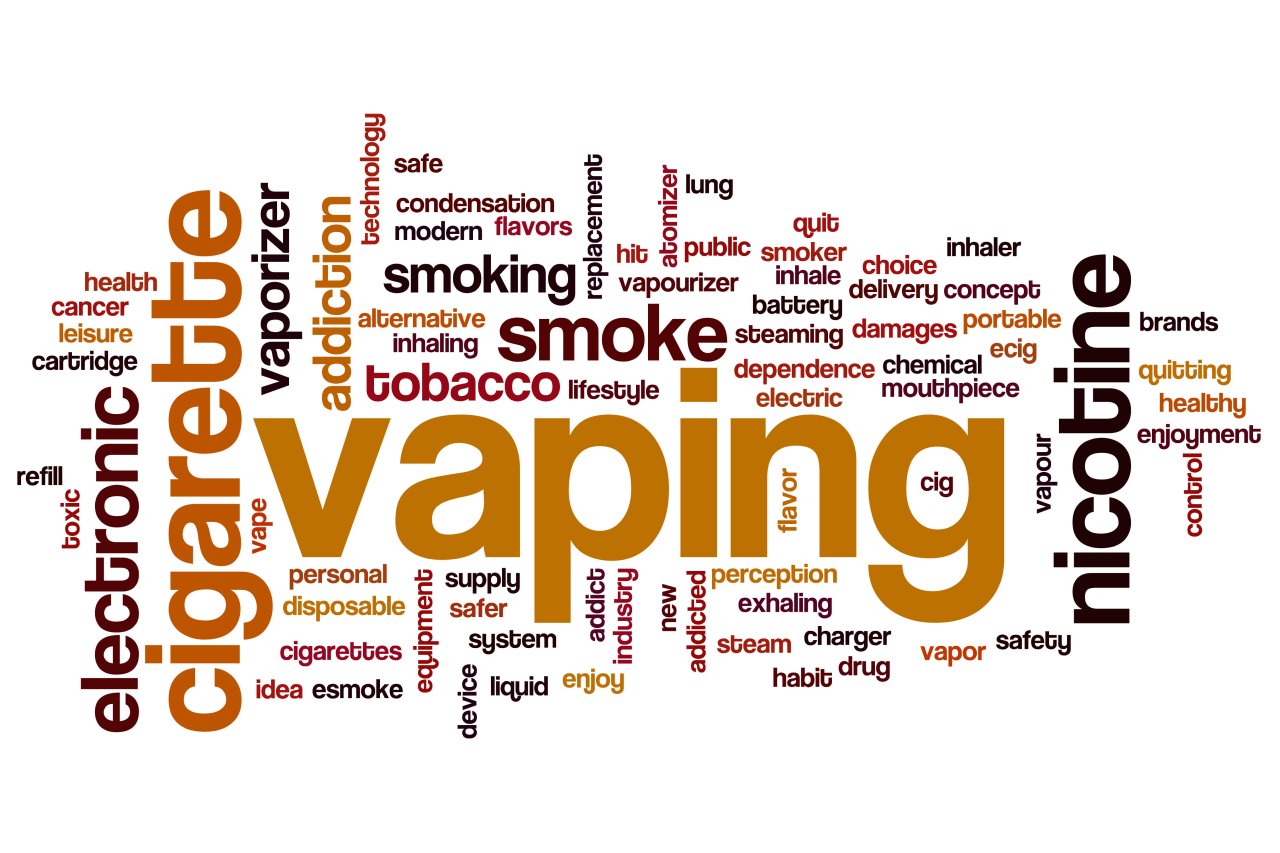Tobacco harm reduction policy in spotlight
US FDA gives first formal approval on e-cigarettes; experts stress importance of accurate information
By Kim So-hyunPublished : Nov. 10, 2021 - 13:54

The US Food and Drug Administration recently authorized for the first time an electronic cigarette to be sold in the US, drawing attention to a harm reduction policy, which is designed to lessen the negative social or physical impacts associated with tobacco use.
The US FDA last month issued marketing granted orders to vapor company R. J. Reynolds for its electronic nicotine delivery device and accompanying tobacco-flavored e-liquid pods through the premarket tobacco product application (PMTA) pathway.
Major US media saw the move as another sign of a shift in the direction of US tobacco control.
The FDA said in a statement that it “determined that the potential benefit to smokers who switch completely (to vaping devices) or significantly reduce their (traditional) cigarette use would outweigh the risk to youth.”
Harm reduction policy refers to replacing highly harmful products with less harmful products in a bid to improve public health or bring social benefits.
Harm reduction is applicable not just to tobacco, but also to food, various products that affect the environment and energy sources.
For example, instead of using internal combustion engine vehicles which use environmentally harmful fossil fuels, regulators and the automotive industry are seeking to shift to less harmful electric cars or hydrogen cars.
The process to generate energy sources for electric or hydrogen cars is still not 100 percent eco-friendly, but they are less harmful to the environment.
Some 400,000 people still die of diseases related to smoking in the US.
The US FDA has focused on the problems of traditional cigarettes that are burned and smoked.
Noting that the toxic chemicals released when burning tobacco cause diseases, US regulators are seeking to provide consumers with accurate information on electronic cigarettes and non-combusted products.
The US FDA has confirmed in 2019 that heat-not-burn reduce harm by deciding to issue PMTA orders on Philip Morris International’s heat-not-burn, which it said will “help protect public health.”
In 2020, the FDA authorized the company’s heat-not-burn as a modified risk tobacco product for the first time, saying the move will “help improve public health.”
The UK government also takes a similar approach. UK regulators have officially said that e-cigarettes are 95 percent safer than tobacco.
Public Health England released a short video of an experiment that showed the difference in the amount of toxic chemicals released by smoking and vaping.
The intention is to encourage those who can’t quit smoking to at least shift to e-cigarettes.
At the 2021 Global Tobacco and Nicotine Forum held in the UK, public health and regulatory experts highlighted the importance of providing accurate information to adult nicotine consumers so that they can choose substitutes to tobacco based on scientific information on harm reduction.
They agreed smoking was the world’s biggest problem, and that a successful harm reduction policy was necessary to resolve this.
At the GTNF, it was also stressed that adult smokers can always make a better choice if they have enough information on tobacco harm reduction.
According to research by American electronic cigarette company Juul Labs, there was a chance to shift 50 percent of adult consumers purchasing Juul products in shops from combustible cigarettes to Juul products.
Most of them were adult smokers who found it difficult to quit smoking or had no interest in quitting.
A recent survey of some 29,000 people around the world by Philip Morris International showed that over 45 percent were misinformed to think that non-combusted cigarettes were more harmful than or as harmful as regular cigarettes.
Also, nearly 60 percent of the respondents misunderstood the causes of smoking-related diseases.
In October, 100 public health and nicotine policy experts called on the World Health Organization to adopt the tobacco harm reduction policy; create an independent review of the WHO’s approach to tobacco control; and appropriately address malpractice by the tobacco industry without forming barriers to the emergence of reduced-risk products.
Despite calls among doctors and scientists for tobacco harm reduction, global health organizations such as the WHO and governments are still applying the same regulations on tobacco and non-combusted cigarettes.
Konstantinos Farsalinos, physician and researcher at the Onassis Cardiac Surgery Center in Greece, said the issue is all about perception.
“Harm reduction is an approach and strategy that we can use in everyday life. The focus of this policy should not about ‘addition;’ it should be on ‘harmfulness,’” he said.
The US FDA last month issued marketing granted orders to vapor company R. J. Reynolds for its electronic nicotine delivery device and accompanying tobacco-flavored e-liquid pods through the premarket tobacco product application (PMTA) pathway.
Major US media saw the move as another sign of a shift in the direction of US tobacco control.
The FDA said in a statement that it “determined that the potential benefit to smokers who switch completely (to vaping devices) or significantly reduce their (traditional) cigarette use would outweigh the risk to youth.”
Harm reduction policy refers to replacing highly harmful products with less harmful products in a bid to improve public health or bring social benefits.
Harm reduction is applicable not just to tobacco, but also to food, various products that affect the environment and energy sources.
For example, instead of using internal combustion engine vehicles which use environmentally harmful fossil fuels, regulators and the automotive industry are seeking to shift to less harmful electric cars or hydrogen cars.
The process to generate energy sources for electric or hydrogen cars is still not 100 percent eco-friendly, but they are less harmful to the environment.
Some 400,000 people still die of diseases related to smoking in the US.
The US FDA has focused on the problems of traditional cigarettes that are burned and smoked.
Noting that the toxic chemicals released when burning tobacco cause diseases, US regulators are seeking to provide consumers with accurate information on electronic cigarettes and non-combusted products.
The US FDA has confirmed in 2019 that heat-not-burn reduce harm by deciding to issue PMTA orders on Philip Morris International’s heat-not-burn, which it said will “help protect public health.”
In 2020, the FDA authorized the company’s heat-not-burn as a modified risk tobacco product for the first time, saying the move will “help improve public health.”
The UK government also takes a similar approach. UK regulators have officially said that e-cigarettes are 95 percent safer than tobacco.
Public Health England released a short video of an experiment that showed the difference in the amount of toxic chemicals released by smoking and vaping.
The intention is to encourage those who can’t quit smoking to at least shift to e-cigarettes.
At the 2021 Global Tobacco and Nicotine Forum held in the UK, public health and regulatory experts highlighted the importance of providing accurate information to adult nicotine consumers so that they can choose substitutes to tobacco based on scientific information on harm reduction.
They agreed smoking was the world’s biggest problem, and that a successful harm reduction policy was necessary to resolve this.
At the GTNF, it was also stressed that adult smokers can always make a better choice if they have enough information on tobacco harm reduction.
According to research by American electronic cigarette company Juul Labs, there was a chance to shift 50 percent of adult consumers purchasing Juul products in shops from combustible cigarettes to Juul products.
Most of them were adult smokers who found it difficult to quit smoking or had no interest in quitting.
A recent survey of some 29,000 people around the world by Philip Morris International showed that over 45 percent were misinformed to think that non-combusted cigarettes were more harmful than or as harmful as regular cigarettes.
Also, nearly 60 percent of the respondents misunderstood the causes of smoking-related diseases.
In October, 100 public health and nicotine policy experts called on the World Health Organization to adopt the tobacco harm reduction policy; create an independent review of the WHO’s approach to tobacco control; and appropriately address malpractice by the tobacco industry without forming barriers to the emergence of reduced-risk products.
Despite calls among doctors and scientists for tobacco harm reduction, global health organizations such as the WHO and governments are still applying the same regulations on tobacco and non-combusted cigarettes.
Konstantinos Farsalinos, physician and researcher at the Onassis Cardiac Surgery Center in Greece, said the issue is all about perception.
“Harm reduction is an approach and strategy that we can use in everyday life. The focus of this policy should not about ‘addition;’ it should be on ‘harmfulness,’” he said.








![[Graphic News] More Koreans say they plan long-distance trips this year](http://res.heraldm.com/phpwas/restmb_idxmake.php?idx=644&simg=/content/image/2024/04/17/20240417050828_0.gif&u=)
![[KH Explains] Hyundai's full hybrid edge to pay off amid slow transition to pure EVs](http://res.heraldm.com/phpwas/restmb_idxmake.php?idx=644&simg=/content/image/2024/04/18/20240418050645_0.jpg&u=20240419100350)






![[From the Scene] Monks, Buddhists hail return of remains of Buddhas](http://res.heraldm.com/phpwas/restmb_idxmake.php?idx=652&simg=/content/image/2024/04/19/20240419050617_0.jpg&u=20240419175937)

![[KH Explains] Hyundai's full hybrid edge to pay off amid slow transition to pure EVs](http://res.heraldm.com/phpwas/restmb_idxmake.php?idx=652&simg=/content/image/2024/04/18/20240418050645_0.jpg&u=20240419100350)

![[Today’s K-pop] Illit drops debut single remix](http://res.heraldm.com/phpwas/restmb_idxmake.php?idx=642&simg=/content/image/2024/04/19/20240419050612_0.jpg&u=)